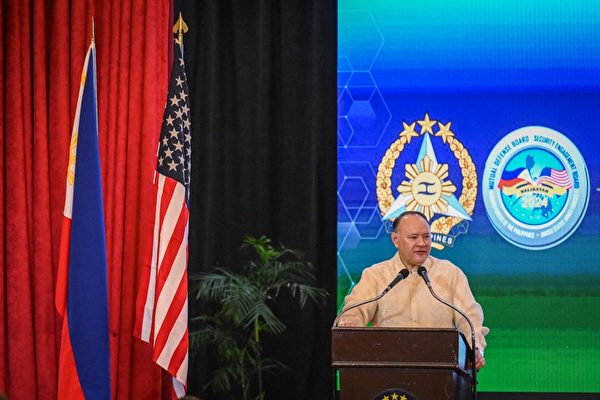The joint military exercise “Shoulder-to-Shoulder” between the United States and the Philippines concluded on Friday, May 10th. This year’s exercise was closely watched as the joint military forces conducted island seizure exercises and successfully sank a simulated Chinese-made enemy ship with high firepower, a move that drew dissatisfaction from the Chinese government. The Filipino Defense Minister announced on Friday that next year’s military exercise will be even larger, with comprehensive combat simulations carried out in more realistic scenarios.
This year’s exercise highlighted the comprehensive capabilities of the US and Filipino military forces in addressing complex security challenges through information warfare exercises, enabling military planners to establish standards for future regional information warfare training programs.
Filipino Defense Minister Gilbert Teodoro Jr. expressed congratulations to the participants of the “Shoulder-to-Shoulder” military exercise during the closing ceremony held in Quezon City. President Marcos congratulated the participants and looked forward to next year’s exercise. Teodoro also mentioned that next year’s event is expected to be on a larger scale, with “comprehensive combat simulations and testing of US-Philippine joint operational capabilities in as realistic scenarios as possible, considering security.”
The Defense Minister commended the absence of any incidents during the exercise, particularly noteworthy given the ongoing El Niño phenomenon. The successful completion of the 2024 “Shoulder-to-Shoulder” joint military exercise by the US and the Philippines not only attracted participation from other allies but also sent a warning to adversaries posing security threats in the Indo-Pacific region.
In addition to the main participating countries, this year’s exercise also included observers from 14 other countries.
According to The Philippine Star, US Marine Corps First Expeditionary Force Commander Michael Cederholm stated during the closing ceremony that this year’s “Shoulder-to-Shoulder” exercise directly prepared them for readiness: “In order to fulfill our responsibilities under the US-Philippines Mutual Defense Treaty, we must train and be prepared at all times.” The treaty stipulates that the two parties shall take joint action in response to any attack on the territories, military forces, vessels, or aircraft of either party in their homeland or Pacific territories.
Amidst the escalating tensions in the South China Sea, where the Chinese have repeatedly harassed Filipino Navy and Coast Guard vessels near two disputed shoals by using powerful water cannons and military-grade laser beams to hinder Filipino resupply operations, the Philippines has been left infuriated by these aggressive actions.
On May 8th, during the “Shoulder-to-Shoulder” joint military exercise, US and Filipino troops launched a series of high-precision rockets, shells, and airstrikes, resulting in the sinking of a retired Filipino Navy supply ship, the BRP Lake Caliraya—of Chinese manufacture.
China condemned this as a provocative act. However, the Filipino ambassador to Washington, Jose Romualdez, told the Associated Press: “We are under the gun.” The Philippines lacks the resources to stand up to China’s bullying alone but can count on its alliance with the United States.
“The alliance is very important; it sends a message to China that you may have all these ships, but we have powerful firepower that can sink them all,” said the Filipino ambassador.
The 2024 US-Philippine “Shoulder-to-Shoulder” military exercise not only prepared for potential conflicts in the South China Sea but also laid the groundwork for addressing potential conflicts in the Taiwan Strait. The exercise focused on regions in the northern and western Philippines close to the South China Sea, with special forces from the US and the Philippines conducting island-seizing exercises in the Batanes Islands, less than 200 kilometers from Taiwan.

